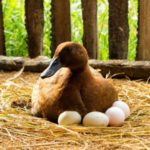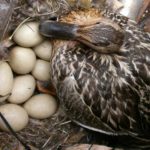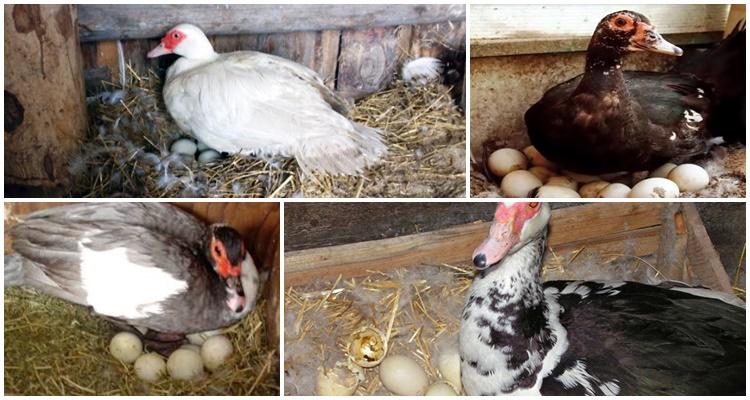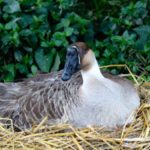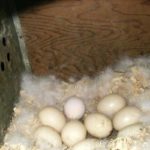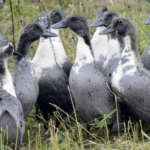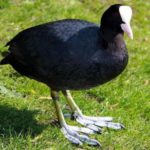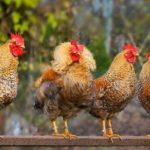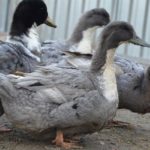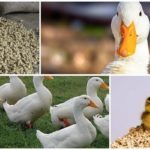People value these poultry, first of all, for their tasty and nutritious meat, as well as down and feathers. But for their successful reproduction, the owners must know how long each duck sits on the laid eggs. This is most directly influenced by the breed or variety of bird, as well as external factors. This must be taken into account when raising birds, both for personal consumption and for subsequent sale on the market.
How many days does a duck sit on eggs?
It is known that each species of these birds incubates eggs for a certain time.But the indicator can change - it is affected by ambient temperature, humidity, daylight hours, diet and other factors.
Basically, the timing of incubation of eggs by different types of ducks is as follows:
- Muscovy (mute duck). This is a common poultry, also called the Indian duck. These birds are a convenient and low-problem option for growing, both in a personal backyard and in poultry farms. The main advantages include: a quiet, calm, non-capricious character, not picky about different types of feed and high resistance to disease. In this way, Indian runners are similar to them - an interesting variety of ducks. Mute ducklings are born after 29-35 days. During this period, it is extremely important not to disturb the hen so that she does not abandon her nest, and also to immediately provide the necessary care and proper nutrition. One musk duck can hatch 12-20 eggs, which are larger in size than chicken eggs.
- Wild duck (gogol, shelduck and others). These birds begin to incubate the clutch from the time when the very last egg was laid. The duration of the appearance of offspring is influenced by many factors, including the variety of the bird itself; the period itself is 28-40 days. Interestingly, the chicks begin to squeak when they are still inside the shell. This usually happens a few days before birth, and the hatching of the offspring itself occurs almost simultaneously.
- Mallard. The reproductive age of such birds occurs approximately a year after birth. After 26-28 days, its numerous offspring are born, of course, if the conditions for keeping the birds are favorable.The chicks destroy the shell together, and the further development of the offspring occurs quickly - after a month their weight reaches one kilogram. What is interesting is that the mallard duck covers the nest with eggs with its own down.
- Bashkir. This variety does not hatch eggs on its own. To obtain the desired offspring, the owner needs to collect the eggs and place them in an incubator, and after 28 days the ducklings will begin to hatch. If there are birds of other breeds on the farm (in particular, Agidel, as well as Cherry Valley), they can be used to hatch the eggs of Bashkir ducks. A decoy bird is often as effective as an incubator; the main thing is to create the right conditions for it.
- Beijing. The volume of its clutch directly depends on the size of the bird itself. Typically, the Pekin duck can hatch twenty eggs at a time. But in birds of this breed the maternal instinct is poorly developed. Often, other hens are used to produce offspring, these can even be chickens. Experienced owners teach Pekingese to sit in the nest, sometimes using dummies of eggs. The offspring of this breed are usually born after 27-29 days.
How many eggs can it sit on?
Novice poultry farmers believe that a hen hatches only a few eggs at a time. But this is a misconception; in fact, the figure is much higher. Typically, the number of eggs a bird sits on directly depends on its size.
But if some of the eggs stick out to the sides or even fall out of the nest, then, of course, the embryos from them will never hatch.
For each duckling to be born, the shell must be under the mother’s body and constantly receive the heat necessary for development.It is important to remember that you should not place more eggs under the hen than she can hatch! Therefore, attentive owners must know the following indicators:
- a female mute is capable of producing 12-20 chicks at a time;
- wild ducks hatch 8-10 chicks at a time;
- the mallard can hatch 7-12 eggs;
- the Bashkir breed produces 10-17 ducklings at a time;
- Beijing - up to 20 eggs.
Some types of ducks (for example, wild ones) cover the nest with down, which floats the clutch, preventing the eggs from cooling when the hen is away.
What can affect the timing?
Ducks of different breeds and species hatch their offspring for different times, but on average it takes about one month. Often incubation of the clutch occurs after the last egg is laid. It must be remembered that each breed of duck has its own characteristics, therefore the timing of the birth of offspring varies:
- wild ducks sit on eggs for 28-40 days;
- mallard – only 26-28 days;
- in Bashkir ducks, offspring appear after 28 days;
- musk chicks hatch in 30-35 days;
- in Pekingese, the offspring hatch after 27-29 days.
The birth time of ducklings is influenced by diet, temperature and other factors that owners must take into account. In the case when the bird sits on the clutch in winter, additional heating is provided and daylight hours are increased using artificial lighting. Usually, before starting to lay eggs, a duck begins to line the nest with down.
This should be a signal that the bird requires increased attention and proper nutrition. The barn where the hens are located must be dry; the birds must not be frightened or disturbed - they must spend most of their time sitting on the eggs.
What problems might there be?
When ducks hatch their offspring, problems often arise that owners must quickly solve. It happens that a bird refuses to sit in the nest and simply leaves the clutch. In this situation, the eggs are placed in an incubator or other types of ducks or even chickens are used as brood hens.
Sometimes ducklings suffocate without pecking the shell. Installing containers with water in the barn helps solve the problem - after bathing, the bird sits wet in the nest, this helps to erase the protective film. It is important to provide birds with a balanced diet during this period, adding special vitamins to their food.

